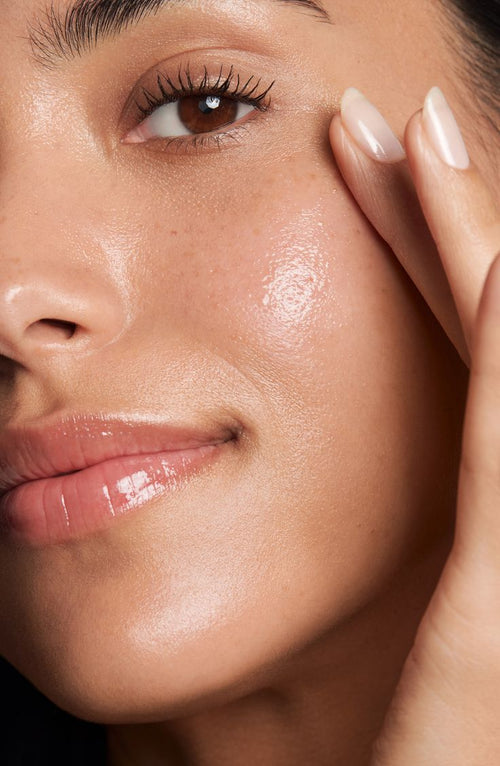
Your Skincare Shelf Life: When to Toss and Replace Products
Share
Skincare products don’t last forever. Over time, they can lose their power, grow bacteria, or cause skin problems. Even if a product looks and smells okay, it might still be unsafe to use. If you’ve ever asked, “Does this lotion still work?” or “Can I still use this serum from last year?” — this guide is for you.
Let’s break down everything you need to know about skin care expiration, from signs a product has gone bad to tips for making your items last longer.
Why Skincare Has an Expiration Date
Skincare products contain active ingredients, water, oils, and preservatives. Over time, these ingredients break down. Some lose effectiveness. Others become unstable or invite bacteria and mold.
Expired products can:
● Stop working
● Cause irritation or breakouts
● Smell weird
● Become unsafe for sensitive skin
This is especially important for natural products with fewer preservatives. These often expire faster than store-bought ones with synthetic stabilizers.
How Long Do Skincare Products Last?
Each product has a different shelf life, depending on its ingredients and packaging. Use this general guide:
|
Product Type |
Shelf Life (Unopened) |
Shelf Life (After Opening) |
|
Cleansers |
2 years |
6–12 months |
|
2 years |
6–12 months |
|
|
Sunscreen (chemical) |
2–3 years |
1 year |
|
Sunscreen (mineral) |
3 years |
1–2 years |
|
1–2 years |
6–9 months |
|
|
Serums (oil-based) |
1–2 years |
9–12 months |
|
Eye creams |
1–2 years |
6–12 months |
|
Retinol or Vitamin C |
1 year or less |
3–6 months |
|
1–2 years |
6–12 months |
|
|
Natural or DIY Products |
Varies (shorter) |
1–3 months |
Check packaging for an open jar symbol—it might say “6M” (six months) or “12M” (twelve months). That tells you how long it’s safe after opening.
Signs a Product Has Gone Bad
Even if you can’t find the expiration date, your product may still be telling you it’s time to toss it.
Watch for these signs:
● Change in smell (rancid, sour, or off)
● Different color or separation
● Change in texture (too thick, too watery, grainy)
● Mold or specks in the product
● New irritation after applying
When in doubt, throw it out. Using expired skincare isn’t worth the risk, especially if you have sensitive or acne-prone skin.
Where to Find Expiration Information
It’s not always easy, but here’s where to look:
● Box or bottle – Some include a printed date (e.g., “EXP 04/25”).
● PAO symbol – This looks like an open jar with a number and an “M.” It means “Period After Opening.”
● Batch code – If there's no date, some companies provide a batch code. You can contact the brand or use a website like checkfresh.com to decode it.
Products That Expire Fast
Some skincare products expire quicker than others, especially those with active ingredients or natural formulas.
Be extra careful with:
● Vitamin C serums – These oxidize fast. If it turns dark orange or brown, toss it.
● Retinol creams – Light and air make them lose power quickly.
● Natural or organic items – Without strong preservatives, these go bad fast.
● SPF – Expired sunscreen won’t protect you from the sun. Always check dates before summer.
● DIY skincare – Homemade masks, oils, and scrubs grow bacteria fast—use within a week or two, unless refrigerated.
How to Make Products Last Longer
Proper storage helps your skincare last and stay safe.
Do this:
● Store products in a cool, dry place (not your hot, steamy bathroom)
● Keep lids tightly closed
● Use clean hands or a spatula to scoop products
● Avoid direct sunlight (especially for vitamin C and retinol)
● Refrigerate natural or preservative-free items
If a product says “store in a cool place” or “refrigerate after opening,” take that seriously.
When to Replace Your Skincare Products
You don’t need to replace your entire skincare routine often, but using expired products can do more harm than good. After a certain point, ingredients break down, lose their effectiveness, and may even irritate your skin.
Most serums, moisturizers, and masks should be replaced about six months after opening. These products are sensitive to air and bacteria, especially if they’re in jars. Over time, even the best formulas can lose their power or become contaminated, which increases the risk of breakouts or skin reactions.
Sunscreens, eye creams, and facial oils can usually last up to a year, but they still degrade. Expired sunscreen won’t protect your skin from UV rays, and old oils may go rancid and clog pores. Eye creams should be fresh to avoid irritation in this delicate area.
Some signs mean it’s time to toss a product right away. If it smells odd, has changed color or texture, or suddenly causes irritation, stop using it. Trust your senses—bad skincare often looks, feels, or smells wrong.
If you haven’t used something in over a year and can’t remember when you opened it, it’s best to let it go. Labeling products with the open date can help. A small, fresh collection is better than a shelf full of expired items.
Smart Skincare Inventory Tips
To avoid waste and make the most of your products:
● Label your products – Use a sticker or marker to write the open date
● Keep a small skincare shelf – Don’t buy more than you’ll use in 6–12 months
Use older items first – Like “first in, first out” in the kitchen
● Only open what you’re using – Unopened products last longer
You don’t need a huge skincare haul to get results. A few well-chosen products that are fresh and safe are better than a drawer full of half-used, expired creams.
Final Thoughts
Taking care of your skin also means knowing when to let products go. Expired skincare can do more harm than good. A serum from two years ago might not just be useless—it might trigger irritation, breakouts, or infection.
Stick to fresh, well-stored products. Use them within their safe time frame. And don’t be afraid to clean out your shelf now and then.

